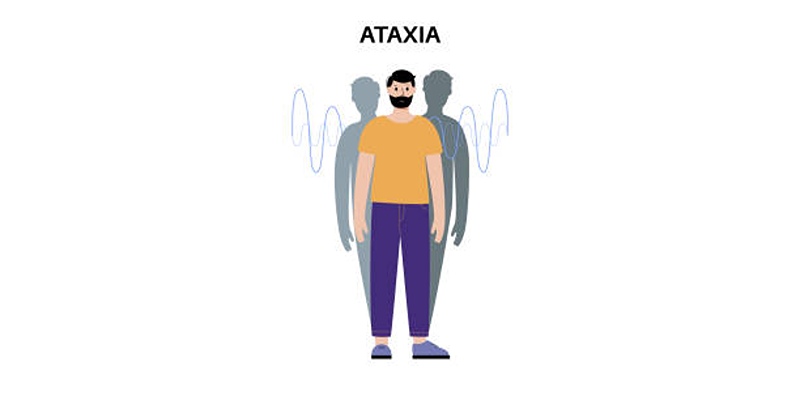Understanding the Long-Term Complications of Lyme Disease
Lyme disease represents a severe condition which develops from Borrelia burgdorferi bacterial presence in ticks that spread through tick bites. Early administration of antibiotics brings effective results but improper treatment at any point creates severe long-lasting medical complications. The late treatment of Lyme disease can create three main complications that affect joints, brain functions and nervous system health and occasionally result in cognitive impairment. PTLDS is the term used to describe the ongoing symptoms that persist in treated Lyme disease patients which severely deteriorates their daily life quality.
What is Lyme Disease?
Lyme disease is an illness caused by tiny pests, often found in wooded or grassy areas, making activities like hiking or camping a bit more challenging. Outdoor enthusiasts and those living in high-risk regions are more likely to encounter these pests. The disease is most prevalent in North America, Europe, and parts of Asia, so staying vigilant and taking precautions while exploring the outdoors is essential.
Early symptoms of Lyme disease include fever, fatigue, headaches, and a distinctive bull's-eye-shaped skin rash called erythema migrans. Fortunately, when identified early, Lyme disease is typically treatable with antibiotics, ensuring a full recovery. Stay aware and protect yourself to fully enjoy nature's adventures!
Long-Term Complications of Lyme Disease:

For some, Lyme disease doesn’t end with treatment—it can evolve into a long-term condition known as Post-Treatment Lyme Disease Syndrome (PTLDS) or chronic Lyme disease, bringing ongoing challenges. This condition is marked by persistent symptoms that can endure for months or even years after the initial infection has been treated. The long-term effects of Lyme disease can impact multiple systems in the body, resulting in a variety of physical and neurological challenges.
1. Chronic Joint Pain and Inflammation
One of the most prevalent long-term complications of Lyme disease is arthritis, particularly affecting the knees. Known as Lyme arthritis, this occurs when the Lyme bacteria infiltrate joint tissues, causing inflammation, swelling, and pain. In some cases, these symptoms persist even after antibiotic treatment, leading to chronic discomfort and limited mobility.
2. Neurological Complications
Lyme disease can severely impact the nervous system, a condition referred to as Lyme neuroborreliosis. Common symptoms include:
- Intense headaches and migraines
- Facial palsy (muscle weakness or drooping on one or both sides of the face)
- Memory lapses and cognitive difficulties
- Numbness, tingling, or shooting pains in the extremities
- Difficulty concentrating, often described as "brain fog"
These neurological symptoms can significantly diminish quality of life, making daily tasks and professional responsibilities challenging to manage.
3. Heart Complications
In rare instances, Lyme disease can affect the heart, causing a condition known as Lyme carditis. This occurs when the bacteria invade heart tissues, leading to inflammation and disruptions in the heart's electrical rhythms. Symptoms may include heart palpitations, chest pain, shortness of breath, and episodes of fainting. If left untreated, Lyme carditis can escalate to serious conditions, such as heart failure.
4. Debilitating Fatigue
Chronic fatigue is a common complaint among individuals with long-term Lyme disease, often persisting long after treatment. This fatigue can be overwhelming, interfering with daily life, work, and social activities. Although the exact cause is not fully understood, it is believed to stem from the body’s prolonged immune response to the infection.
5. Mental Health Impacts
The chronic nature of Lyme disease often takes a significant toll on mental health. Many individuals experience heightened anxiety, depression, and mood swings. The combination of debilitating physical symptoms, cognitive challenges, and the frustration of managing a misunderstood condition can lead to emotional strain and distress.
Challenges of Diagnosing Chronic Lyme Disease:
Diagnosing chronic Lyme disease is notoriously difficult. Its symptoms are often vague and overlap with other conditions like fibromyalgia, chronic fatigue syndrome, and autoimmune disorders, making it easy to misdiagnose. Compounding the issue, standard diagnostic tests such as ELISA and Western blot are not always reliable in detecting chronic infections.
Many patients with chronic Lyme disease endure multiple tests and consultations before finally receiving an accurate diagnosis. This delay can prolong their suffering and exacerbate their symptoms.
Why Early Intervention Matters?
Detecting and treating Lyme disease early is essential to prevent serious, long-term complications. When caught in its initial stages, the disease is typically manageable with a 2- to 4-week course of oral antibiotics, such as doxycycline or amoxicillin. However, delaying treatment allows the infection to spread, potentially causing more severe and persistent symptoms throughout the body.
For those who develop chronic Lyme disease, treatment often requires a longer course of antibiotics combined with supportive therapies to manage ongoing symptoms. These may include pain management, physical therapy, cognitive behavioral therapy, and lifestyle adjustments to improve overall well-being.
Treating Early-Stage Lyme Disease:
The primary objective is to eliminate the infection and prevent its progression. Standard treatment for early-stage Lyme disease involves a short course of antibiotics.
1. Oral Antibiotics
A 2- to 4-week regimen of oral antibiotics is the recommended treatment for patients with early localized or early disseminated Lyme disease. The most commonly prescribed options include:
- Doxycycline: Often the first choice for adults and children over 8, doxycycline is effective against Lyme disease bacteria and other tick-borne illnesses, such as anaplasmosis.
- Amoxicillin: Frequently prescribed for younger children, or individuals who cannot tolerate doxycycline.
- Cefuroxime axetil: A suitable alternative for patients unable to take doxycycline or amoxicillin.
2. Monitoring and Follow-Up
Following antibiotic therapy, patients are monitored for any persistent or recurring symptoms. In the majority of cases, early-stage Lyme disease resolves completely with prompt treatment, eliminating the need for further intervention. However, if symptoms persist, additional evaluation and treatment may be necessary.
Living with Chronic Lyme Disease:

Managing chronic Lyme disease presents significant physical and emotional challenges. Many individuals find solace in connecting with support groups or online communities, where they can share their experiences and learn effective coping strategies. Partnering with healthcare professionals who specialize in Lyme disease is also essential, as they can offer expert guidance and tailored support.
Prioritizing self-care plays a crucial role in improving well-being for those living with this condition. This includes maintaining a nutritious, balanced diet, engaging in gentle forms of exercise, adopting stress management techniques, and ensuring adequate rest. While there is currently no cure for chronic Lyme disease, these practices can help enhance quality of life and foster overall wellness.
Conclusion:
Lyme disease is a complex condition that can lead to serious long-term consequences if not treated early. Timely diagnosis and treatment are essential to prevent chronic complications, yet many individuals continue to struggle with persistent symptoms that impact their physical health, neurological function, and emotional well-being. By raising awareness, improving diagnostic tools, and advancing research, we can better support those affected by Lyme disease and work toward more effective treatments for this challenging illness.











